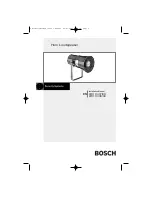
VXO8715/3118
INSTALLATION GUIDE
PAGE 5 of 6
ELECTRICAL CONNECTION
COMPRESSOR
The red wire of the compressor should be connected to (+) 12-volt power source.
IMPORTANT
: To prevent
the compressor from over running and possible damage due to an air leak,
connect the compressor’s red wire
to a power source in the vehicle that only gets power wh
en the vehicle’s ignition is on. Recommended
connection points are: windshield wiper motor, blower motor or an accessory terminal on the fuse panel.
Make sure to use wire that is as heavy as the wire of the compressor.
Attach the black wire to any
of the Pressure Switch’s connections located on the air tank.
The remaining Pressure Switch connection should be attached to ground. Secure the end under any metal
body or to the negative side of the vehicle’s battery. The ground connection should be rust and paint free.
Your compressor is now set for use and will turn on automatically when air pressure in the air tank falls. When
air pressure reaches maximum PSI, it will turn off. If the compressor fails to reach the maximum air pressure
of the tank, which is the Pressure Switch's cut OFF pressure, check all air connections for leaks. While the
compressor is pumping, use soapy water or any bubble solution to perform this check. In case the leak
remains after tightening, re-apply thread sealant.
CAUTION
: Never touch fittings, braided hose or the air compressor with bare hands either during or shortly
after use.
HORN (SOLENOID)
USING NEW HORN BUTTON
Connect one of the electric valve’s wires to the positive (+) terminal of the battery, alternator, etc. This circuit
should be protected using a 10A fuse (not provided).
Connect the second electric valve wire to one of the Horn Button’s connections. The remaining connection of
the Horn Button must be connected to ground.
USING VEHICLE’S HORN SWITCH
First, det
ermine the switch’s polarity. The horn of most vehicles sends a negative (-) signal which can be
confirmed by connecting one of the probes from an ohm meter to the wire of the horn while connecting the
other one to ground. The meter should be at zero. This proves that horn circuit is negative (-). In case the
meter reads anything other than zero ohms, test for voltage between the wire of the horn and the ground. A
12-volt reading would mean a positive (+) horn circuit.
Once you know the horn circuit’s polarity, connect any of the solenoid wires to the horn wire.
If you have a negative horn circuit, connect the remaining solenoid wire to a constant 12-volt power source.
If you have a positive horn circuit, connect the remaining solenoid wire to ground.

















